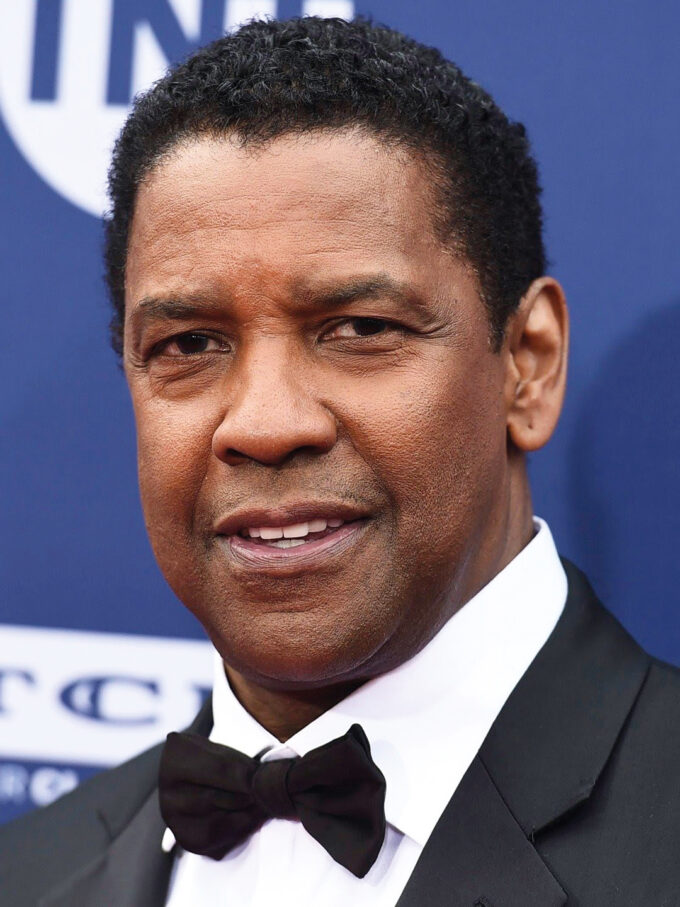
Why leaders should learn to value the boundary spanners
Entrepreneurial talent who work with other teams often run into trouble with their managers. Here are ways to get the most out of your ‘boundary spanners’...
Audio available

by Katharina Lange Published February 20, 2025 in Leadership • 11 min read • 
Jane is in her fifties and an experienced country manager at a global engineering company. She runs a large P&L and asks her team of 10 to report their results in a Monday morning meeting at the office over coffee and croissants. However, John, a new hire in his early twenties, asks to join the meetings virtually. He says the commute is a pain, and he could work more efficiently from home. Jane says no because she considers the meetings essential to building team culture and monitoring results. John resigns six weeks later.
Losing talented team members is costly, so could this culture clash be prevented? Conversations with executives worldwide indicate three key levers to mitigate (or at least alleviate) these tensions. First, we need to better understand the trans-generational dynamics.
“Each of us is born into a moment in time that shapes us and our worldview more than we are aware,” writes Robert Greene in his book The Laws of Human Nature. Our generation influences our values, aspirations, and interactions with the world and frames our identity and perspective. Understanding the essence of our generation and the times we live in enables us to navigate the prevailing trends effectively. It helps us anticipate and set the trends that resonate with our peers and frees us from mental constraints imposed by our generation. In short, it will allow us to become the leaders we aspire to be.
As responsible leaders, it is crucial to recognize the role of generational dynamics in the workplace and understand how they shape us and our colleagues and employees. This awareness allows us to manage a workforce of multiple generations more productively.
A generation spans 20 to 25 years. The historical context shapes and develops specific tastes, values, and ways of thinking that we internalize. Dramatic events such as economic or health crises, wars, or technological disruptions in our teenage and young adult years, age 12-20, influence how we think. As young adults, we start having an impact on the world with our ideals and culture, often conflicting with older generations. Older generations may see the younger ones as immature and spoiled, but they envy their youth and energy. By the time we reach our 30s and 40s, we have started to reshape the world in ways that differ from how our parents experienced it. Each generation seeks to distinguish itself from its predecessors. This generational conflict is universal and ancient.
Transgenerational dynamics can be understood as a recurring pattern in four steps. These patterns reflect the cyclical nature of societal change, where each generation plays a specific role in shaping the future.
Revolutionaries: The generational cycle starts with the revolutionaries who break from the past and its existing values. In doing so, they often create chaos and upheaval, disrupting established norms – and creating new ones.
Order seekers: The next generation seeks to restore order by establishing new conventions and norms. They still feel the residual heat of the revolution but focus on creating stability and structure.
Pragmatists: The third generation consists of pragmatists who seek to make life more comfortable and pleasant. They are more individualistic and less interested in the collective, focusing on personal success and practical solutions.
Insecure: The fourth generation is insecure and questions the values inherited from the past. They often feel that society has lost its vitality and are more open to replacing outdated systems.
This cycle repeats itself over time, and each generation plays its part in advancing it. Throughout history, periods of anarchy have preceded the decline of societies. Signs of impending revolution include local conflicts and rising tensions. As these disruptions occur, new generational patterns emerge, and society adapts to the changes brought by each new wave of influence.

Creating a generational profile can help us to gain a clearer view of our generation. This is not an exact science but an attempt to capture and understand the spirit of a large group formed by the events that collectively shaped its approach to education, relationships, and physical and emotional well-being.
Four generations are present in the workforce: Baby Boomers, Generation X, Millennials, and Gen Z. The Silent Generation largely left the workforce a while ago but still has an impact on how generations are shaped.
The Silent Generation (1928-1945): This generation came of age during a time of major upheaval, shaped by the experiences of the Great Depression and two world wars. Known for their financial prudence, strong work ethic, and sense of self-sacrifice, they are the revolutionaries who laid the foundation for the post-war world.
Baby Boomers (1946-1964): As the generation that sought to bring order after the chaos, Boomers are often blamed for the challenges of today, particularly in the US. They witnessed the space race, the Cold War, and the rise of nuclear power and weaponry. They moved from the idealism of the 1960s to the pragmatism of the 1980s, with many conforming to mainstream careers. Many Boomers are now retiring, passing the baton to the next generation.
Generation X (1965-1980): Known for their pragmatism, Gen Xers came of age during the end of the Cold War and the beginning of globalization. They were early adopters of the internet and embraced the allure of entrepreneurship during the dot com bubble. As individualists, they preferred freelance work and startups over traditional corporate careers. Now in mid-life, many Gen Xers feel like survivors of economic and social shifts.
Millennials (1981-2000): Millennials are the first digital natives. Shaped by events like 9/11 and the 2008 global financial crisis, they grew up with a heightened sense of insecurity. Overly involved “helicopter” parents and tiger moms and a focus on child safety defined their upbringing. They are deeply immersed in social media, and their tastes reflect a desire for sustainability and health-conscious living.
If we apply the generational cycle to the existing generations in the workplace – what does it lead us to when we look at the next generation slowly making its way into the workplace?
The Gen Z /Alpha (2001-2020), fully digital natives, are very much questioning the values they have inherited. Dramatically declining birthrates make children rarer. Often, they become “shiny objects” for an aging society. However, this generation faces the threat of artificial intelligence and aggravating climate change. As Jonathan Haidt outlined in his book The Anxious Generation, their reactions to the anxieties of the modern era are amplified by social media.
If the generational cycle holds true, this youngest generation should be showing the first signs of rebellion.

If we define “responsible” as “responding to or answering” the call of duty, how can leaders respond to these generational challenges in a productive way?
First, leaders will want to ease tensions and leverage the strengths of each generation. Executives should be able to recognize these traits and develop strategies to harness the power of each generation – while mitigating potential pitfalls – to create an inclusive and fair workplace culture. This will address potential mindset traps and guide the workforce toward productive development.
The most prevalent generations in the workplace today are Gen X, often in leadership positions, along with Millennials and Gen Z, as team members or in emerging leadership roles. Let’s look at each in turn.
In the workforce, the strengths of Gen Xers lie in their pragmatism –getting things done in a no-nonsense, solution-oriented way. They prefer stability and more traditional work paths. A career in a (large) corporation is still seen as aspirational and valued. As pragmatists, they work independently and reliably, leaning toward an individualistic work style. They are almost as loyal to their employers as the Baby Boomers and the Silent Generation.
However, overplaying these strengths risks a work atmosphere that stifles new ideas with routine and protocols. Rigid rules and reporting lines are the antithesis of egalitarian collaboration and create tensions with younger members of the workforce.
The strengths of Millennials and Gen Z are their agility and flexibility: they can let go and adjust quickly to new conditions. Another superpower is their digital savviness, their ability to live in the digital world and use digital tools. Growing up with the internet and AI makes them skillful power users. This could be leveraged in reverse mentoring, even at the board level. Shadow boards, for example, have young, non-executive employees working with the executive board on strategic initiatives. These boards are designed to introduce a company’s (typically middle-aged) leadership team to new perspectives and insights, thereby helping to drive strategy.
Millennials are also often characterized as purpose-driven: They aspire to lead a value-based, authentic, and meaningful life. Societal engagement and environmental responsibility are seen as equally if not more important than career progression.
Overplaying these strengths, however, might cause tensions. Heightened agility might result in a more transactional approach to work: when unexpected events crop up, it is “not their problem”. The ownership that older generations feel doesn’t connect with younger workers. Agility and flexibility could turn into a lack of loyalty, or as one executive from a large Nordic company put it: “They don’t ask what they can do for the company, but what the company can do for them. It is a very different mindset.”
Their digital savviness might also be a cause for caution. Younger generations are masters of presenting themselves and their lives on social platforms. Social media amplifies anxiety, and instant gratification can exacerbate narcissistic behavior.
According to our generational cycle, Gen X are the pragmatists, while Millennials and Gen Z represent the insecure, “anxious” generation. Like similarly placed generations before them, Gen Z questions the values and assumptions of previous generations. However, given their propensity for flexibility, they might be willing to let go of existing conventions even faster and more profoundly.

Ask yourself how you could address potentially observed tensions and anxieties between generations in a productive way. After all, they might be signs of larger disruptions to come. To manage a multi-generational workforce effectively and ease tensions between generations, leaders can follow these recommendations:
Define a clear employer value proposition (EVP): Leaders need to communicate clearly what they can offer employees joining the company. Gravitating away from monetary incentives and reinforcing self-transcending values can help attract and retain Millennials and GenZers. As one executive explained: “The way to grow ‘intrapreneurs’ will need to change, and the older gen needs to adapt if they want their legacy to sustain.” The current model of compensation and rewards will need to evolve toward a different mix of the shorter and longer term.
The younger generation was brought up with instant gratification – so that’s the place to start. And the (quick) successes and (quicker) failures along the way could lead to a preference for longer-term reward models. The income gap between the top layers of management and entry-level layers will need to be balanced over time. And leaders should voluntarily lead the way to reduce that gap – it will more likely drive inclusivity and engagement.
Value-based productive friction: Leaders need to role model a well-curated set of self-enhancing and self-transcending values with integrity. This should include social justice, equality, humility, temperance, and benevolence. Given that Gen X is individualistic, this requires extra effort and self-awareness on their part. Also, leaders from older generations need to offer a safe space for productive friction and conflict. This applies to private settings as parents as well as in a professional work environment. Neither parents nor leaders should want to be the friends of their children or staff. Chasing the young generations’ approval would be detrimental as it would inflame any narcissistic tendencies. As hard as it might be, being the strong backbone with a solid base of values on which the younger generation can grow through productive friction will be essential.

Accountability: Team members need to count on each other. Being responsible is a reciprocal process. Linking the way the business purpose of the role of a younger team member relates to their individual purpose helps to increase accountability. In return, being held accountable in this way nurtures a sense of responsibility for the outcome of the younger generation’s actions. Learning that choices have consequences might be a painful but helpful experience.
Communication: Different generations struggle to work together because they lack a common language. It is not just words but their meanings or connotations. If younger generations spent more time in direct contact with their employees (there has been a large percentage shift from boomers to younger gens), they would be more likely to stay and grow with their current employer. The outcomes would be lower attrition, increased efficiency, and more engagement. Listen to them actively and respond appropriately. Share a common vision and interpret this to set clear objectives, ensuring these are cascaded in terms of expectations for each team and team member. Keep balance in teams. Provide opportunities for communication, perhaps by creating inter-generational platforms, and address any potential issues immediately.
Learn about and from each other: Older generations can learn about flexibility, social conscience, and inclusion from their younger colleagues. They can participate in reverse mentoring to stay afloat with innovative technology and cybersecurity. Boomers and Gen Xers can learn new tricks connected to technology and a better work-life balance – as well as how to have more fun at work or to take more risks. Responsible leaders should ensure that older colleagues remain flexible and embrace an inclusive approach.
Younger generations can learn about commitment and that keeping commitments is important for their careers. Over time, they need to learn to appreciate history and context, as well as the wisdom and sound judgment that comes from reflected experience and patience. As one Scandinavian executive put it: “Young leaders in the armed forces must learn from history and not repeat the mistakes of past generations.”
A better awareness of these generational dynamics will help to shape a more harmonious and productive work environment for all. By working together and understanding each other’s strengths and weaknesses, different generations can co-create that desired space for each other rather than falling into the same old traps of intergenerational conflict and unhappiness.

Affiliate Professor of Leadership
Katharina Lange is Affiliate Professor of Leadership at IMD. She specializes in self-leadership and cross-cultural team leadership in times of change. Before joining IMD, Katharina led the Office of Executive Development at Singapore Management University, where she directed Open Programs such as ALPINE (Asia Leaders Program in Infrastructure) and the J&J Hospital Management Program.

July 3, 2025 • by Eric Quintane in Audio articles
Entrepreneurial talent who work with other teams often run into trouble with their managers. Here are ways to get the most out of your ‘boundary spanners’...
 Audio available
Audio available
June 24, 2025 • by Jerry Davis in Audio articles
The tech broligarchs have invested heavily in Donald Trump but are not getting the payback they bargained for. Do big business and the markets still shape US government policy, or is the...
 Audio available
Audio available
June 19, 2025 • by David Bach, Richard Baldwin, Simon J. Evenett in Audio articles
As governments lock horns in our increasingly multipolar world, long-held assumptions are being upended. Forward-looking executives realize the next phase of globalization necessitates novel approaches....
 Audio available
Audio available
June 2, 2025 • by George Kohlrieser in Audio articles
Leadership Honesty and courage: building on the cornerstones of trust by George Kohlrieser Published 17 April 2025 in Leadership • 5 min read DownloadSave Trust is the bedrock of effective leadership. It...
 Audio available
Audio availableExplore first person business intelligence from top minds curated for a global executive audience